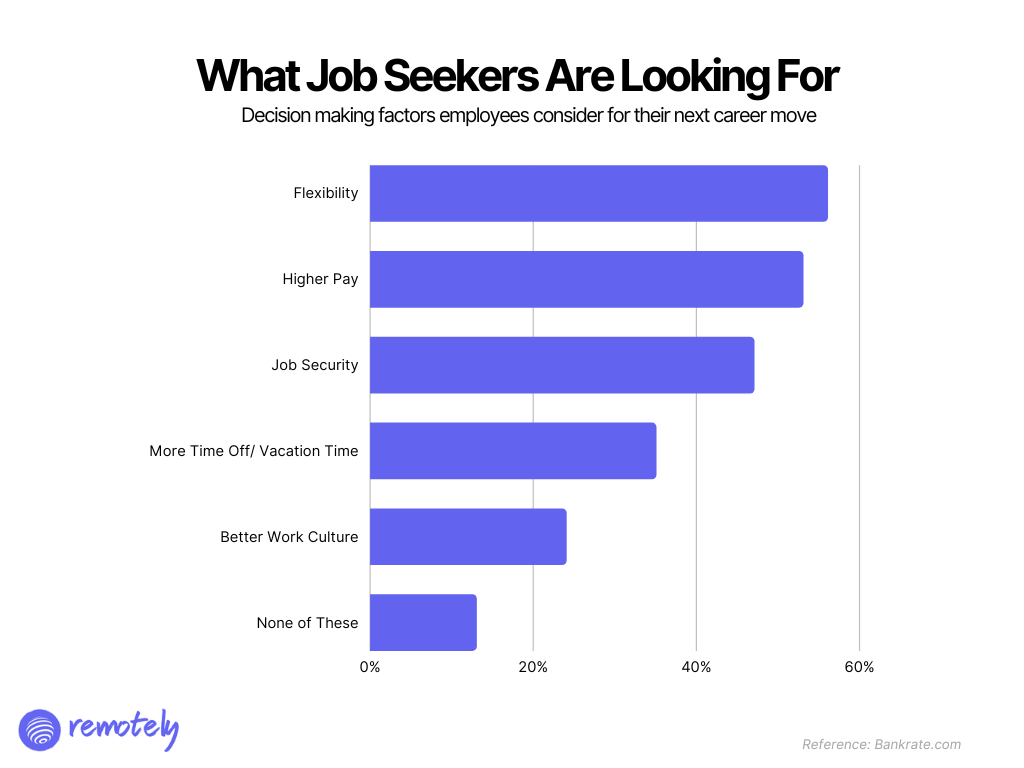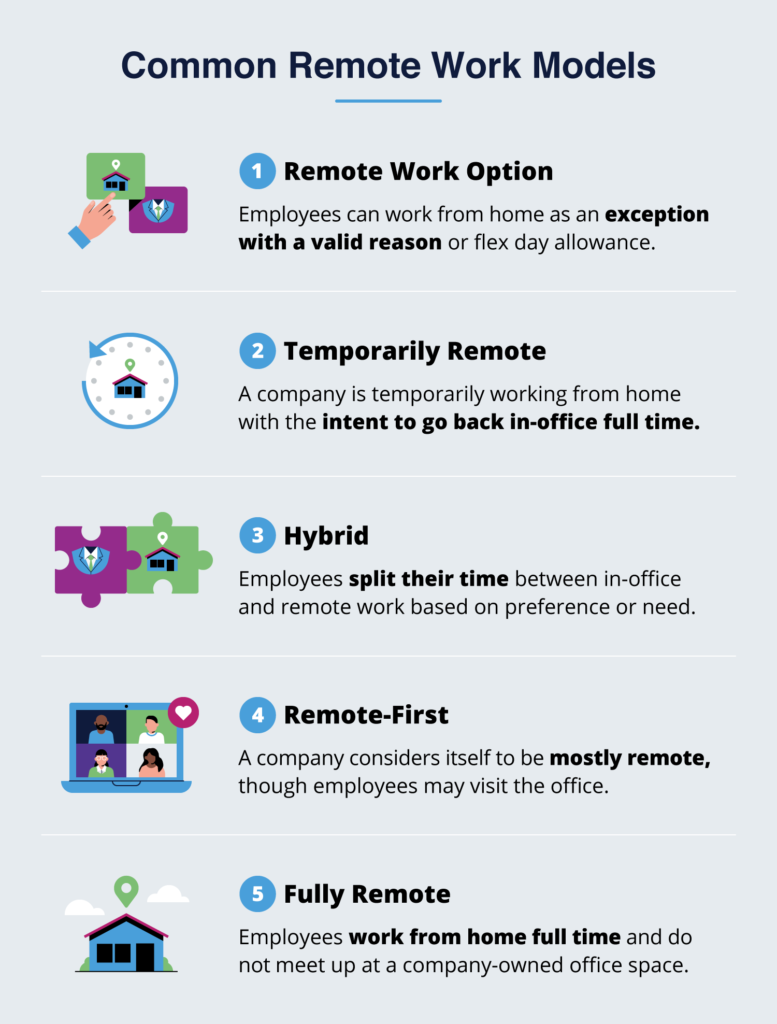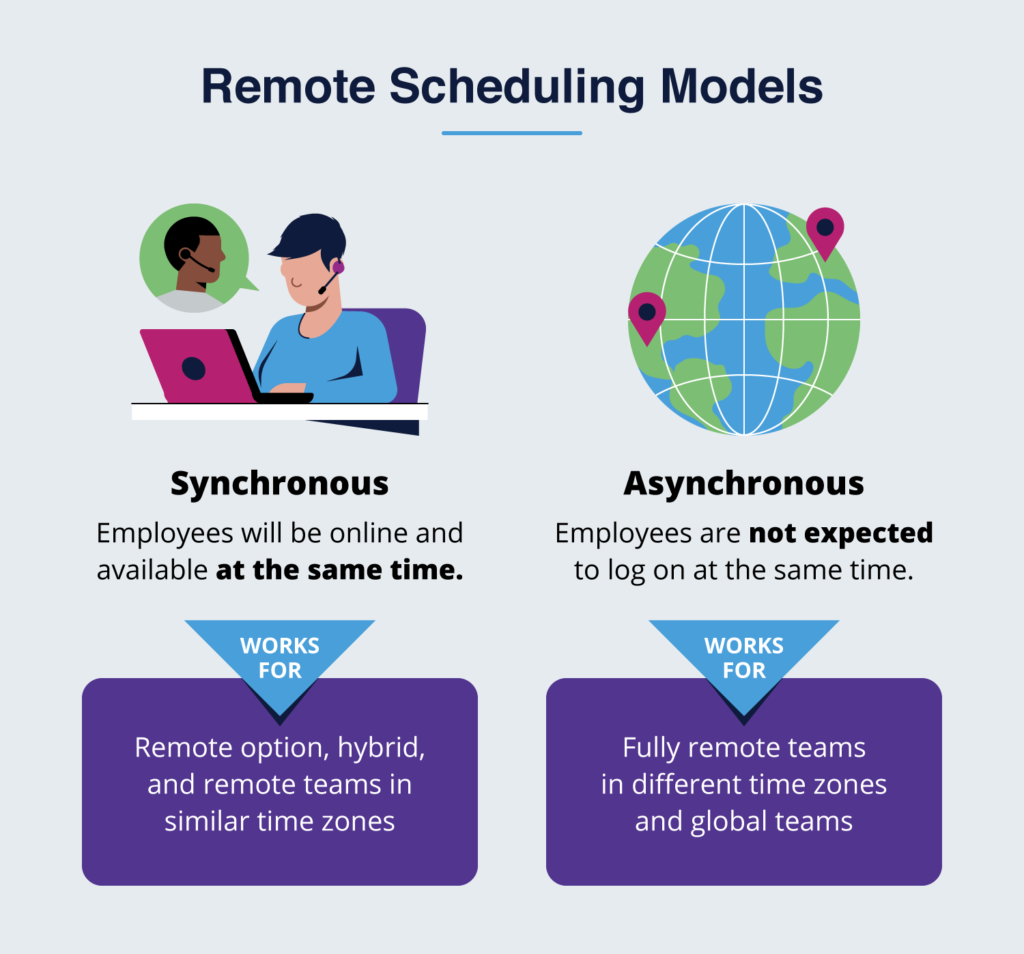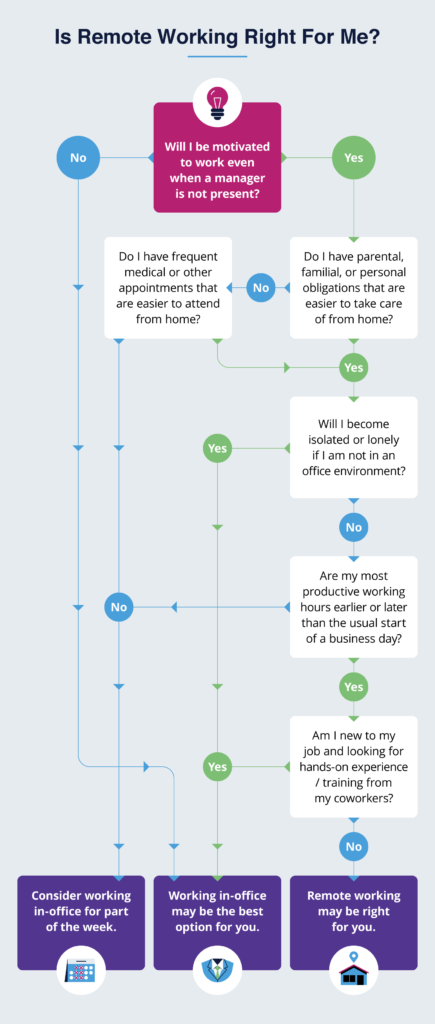For job seekers
For companies
For job seekers
For companies
Updated June 11, 2023 by Axel Grubba
Ready to find a remote job? Or expand your remote business?
Browse jobsEvery day, CEO Sid Sijbrandij leads the operations of the multibillion-dollar code collaboration company GitLab. He does it not from a fancy corner office in a glass-and-metal skyscraper in some business district.
He does all his “CEO-ing” from his home in San Francisco, California – or wherever he is at the moment.
As the self-proclaimed “world’s largest all-remote company,” GitLab has no company-owned offices and only hires remote workers. Currently, it employs more than 1,600 team members across over 65 countries.
“Work is work, whether you’re doing it in an office building, in your home office, or a coffee shop,” writes Sijbrandij in a Fortune.com article.
Gitlab has embraced remote work for more than a decade, but the idea of working outside of the confines of a physical office has been around for years before that.
In fact, in 1970, without explicitly referring to remote work, the Clean Air Movement, alluded to one of its pillars: zero commute time.
In 1973, NASA physicist Jack Nilles, regarded as the ‘Father of Remote Work’ authored The Telecommunications-Transportation Tradeoff where the term telecommuting was coined. Nilles proposed: “[In] parallel with the advent and growth of electronic and computer technologies, an increasing proportion of the population has been engaged in the creation, transfer, processing and/or storage of information – work that does not necessarily require the physical presence of the worker.”
He adds: “Given the capability of modern telecommunications and computer technologies to efficiently produce, transmit, and store information, it appears probable that many information industry workers could “telecommute.” That is, they could perform their work, using communications and computer technologies, at locations much closer to their homes than is the case now.”
 The concept of telecommuting was first proposed in 1973 by NASA physicist Jack M. Nilles (Image Source).
The concept of telecommuting was first proposed in 1973 by NASA physicist Jack M. Nilles (Image Source).
In the 6th year of the OPEC oil embargo in 1979, The Washington Post published an article entitled Working at Home Can Save Gasoline and in the same year, IBM allowed five of its employees to work from home as an experiment, becoming one of the first big-name organizations to embrace remote work.
More companies soon followed suit. J.C. Penney allowed its call-center employees to work from home in the mid-1980s and by 1987, 1.5 million Americans were telecommuting.
Improvements in personal computing, the rise of mobile devices, and faster and more reliable residential internet services accelerated remote work in the 90s and the 2000s and in 2020, the COVID-19 pandemic created a remote work tipping point where millions of employees around the world had to relocate their work from the office to their homes.
Today, as the threat of COVID-19 simmers down, several organizations are summoning their employees back to the office. But if there’s one thing the past two years have proven, more employees, as long as they have the tools and resources they need, can work and work well wherever they are – whether they’re at the office, at home, in a co-working space, or a coffee shop.
Remote work is here to stay and for good reasons. According to a study from the University of Chicago’s Becker Friedman Insitute, the post-pandemic economy will enjoy a productivity growth of 4.8%, primarily stemming from the time saved by not commuting.
Bankrate’s recent Job Seekers Survey which was conducted at the height of what is now known as ‘The Great Resignation’ also revealed that 56% of the workforce, mostly comprising of millennial and Gen Z workers, rank flexibility as their #1 consideration when looking for a new job, even overtaking the desire for a higher salary.
 Flexibility which includes the option to work remotely is the most critical decision-making tipping point when workers are looking for their next career move.
Flexibility which includes the option to work remotely is the most critical decision-making tipping point when workers are looking for their next career move.
These numbers barely scratch the surface and based on current data, projections, and numerous surveys, all signs point to remote work as a staple of current and future modern-day workplaces.
Whether you’re a business owner or entrepreneur looking to expand your team, an active jobseeker, or a worker pondering on exploring new opportunities, remote work should be on your radar if it isn’t yet.
Interchangeably used with many terms – telecommuting, distributed work, work from home, work from anywhere, telework, distance work, and mobile work among others – remote work is essentially a type of flexible arrangement allowing employees to work outside of a traditional physical office.
Different organizations use different approaches to how they implement remote work, but most can be classified into one of the following five levels:
 The five most common remote work frameworks (Image Source).
The five most common remote work frameworks (Image Source).
Also called a Remote Allowed Model, this type of remote work arrangement gives employees the option to work from home given that they present a valid reason for not working in the office (e.g. personal obligations) or giving them a few days in a week or month that they can use to work a different location. In this model, the physical office is still considered the center of the company, and most of the time, members of the leadership work from the office.
An interim arrangement that allows employees to telecommute with the expectation that they will be asked to return to the office at a certain time. The most obvious example of this is the employees who were allowed to work from home because of the pandemic and are now being asked to report back to their offices.
A hybrid remote setup can have different configurations – a combination of employees who are fully remote and fully in-office; mostly remote employees and employees who are mostly reporting to the office; or all employees can split their time between telework and working in the office.
Remote-first organizations optimize their operations assuming that all employees will work remotely. However, they still maintain a physical office where employees can gather either for work purposes or nonwork-related engagement.
Like in the example of GitLab, fully remote companies do not maintain a physical office and all employees work at home or wherever they are at the moment full-time. Remote-only organizations may opt to hire workers from a single geographical location or be fully dispersed and distributed.
Except for jobs that need highly specialized equipment, facilities, and protocols (think surgery), virtually all types of jobs can be done as long as a worker has the necessary tools and resources needed.
When looking into the types of jobs that can be efficiently and effectively performed in a remote setup, it’s important to look at the following important criteria.
Depending on the role, some remote jobs would require synchronous scheduling, which means that workers are expected to be available during business hours – whatever that means in the context of an organization’s day-to-day operations. For example, for B2B companies, employees may be expected to work when their clients are also working.
 Key distinctions between synchronous and asynchronous scheduling (Image Source).
Key distinctions between synchronous and asynchronous scheduling (Image Source).
For roles that are primarily output-based, an asynchronous schedule can work, given that the employees meet deadlines. Companies that allow their team to work asynchronously often require overlapping hours and need robust communication protocols to ensure seamless operations. One of the main advantages of following an asynchronous model is it allows businesses to tap into global talents who are working in different time zones.
Another important consideration when transitioning to remote is whether to hire freelancers or regular/full-time employees.
Businesses have utilized remote freelancers to augment their current workforce without adding much to the overhead costs of adding seats to their offices or paying the standard benefits that full-time employees are entitled to. Hiring freelancers is ideal for organizations that follow the Remote Work Option model or for entrepreneurs who are just starting to build their teams.
More mature organizations that are looking at scaling their operations for growth are better off hiring full-time remote employees to get the level of commitment from dedicated staff.
All industries can leverage remote work in some areas of their operations in some way, shape, or form. They may not transition to an all-remote setup, but certain day-to-day functions can be carried out via telecommuting.
However, some industries are more predisposed to make the switch to remote work than others. These are industries with core functions that can be carried out via cloud-based tools and platforms. These include:
According to a Ladders survey, the following industries saw the biggest jump in the number of remote workers from 2020 to 2021 during the height of the pandemic:
These numbers are expected to rise. In North America alone, 25% of all professional jobs are projected to be done remotely by the end of 2022 and will continue to increase in 2023.
This hockey stick growth underscores the clamor for remote work – both among employees and employers, however, it’s not all upsides. Depending on who’s delivering the narrative, remote work can either be revered or despised.
Objectively speaking, here are the pros and cons of remote work:
Overall, the benefits of remote work, based on data, outweigh the challenges. However, employers and workers can’t turn a blind eye to these potential issues and should proactively address them to minimize their potential negative impact.
The success of telecommuting depends on how strong the foundation employers build to support their remote workforce.
Here are 6 real-world tested cornerstones of effective remote work to help leaders reap the benefits of telework in their respective organizations:
For employees who want to transition from a full-time in-office job to a 100% remote role, finding a remote job is only half the battle.
Truth be told, remote work is not for all employees, in the same way, that it’s not for all employers. Before scouring through job boards, job seekers should first do a self-assessment and determine whether they will thrive in a remote job or not.
 Not all employees are suited for remote work and it’s critical for job seekers to assess their telecommuting readiness (Image Source).
Not all employees are suited for remote work and it’s critical for job seekers to assess their telecommuting readiness (Image Source).
Luckily, workers who have determined that working from home is right for them will find no shortage of available remote jobs. As previously discussed, the number of remote jobs is expected to skyrocket in the coming years.
An effective way to find a remote job is to create an account on a job board that’s dedicated to remote job openings. Most of these job sites allow two-way communication – employees can contact employers and vice versa. There are also niche job boards that focus on specific specializations or skills (e.g. IT, programming and coding, writing, etc.). Professional social media platforms such as LinkedIn are also a potent channel to find a remote job.
There’s a telecommuting cliche: Work is what you do, not a place you go to.
Remote work is no longer just a buzzword, a trend, or a hazy vision of the future. Recent events have catalyzed and accelerated the growth of telecommuting. It has changed the way people work and how businesses run their operations.
It could be your next big career or business move – the key is to arm yourself with as much information so you can build a strong foundation where remote work can thrive.
Your first step towards discovering everything remote work has to offer begins with a dedicated remote job board like Remotely. Visit TryRemotely.com today to post your remote job openings or find remote working opportunities.